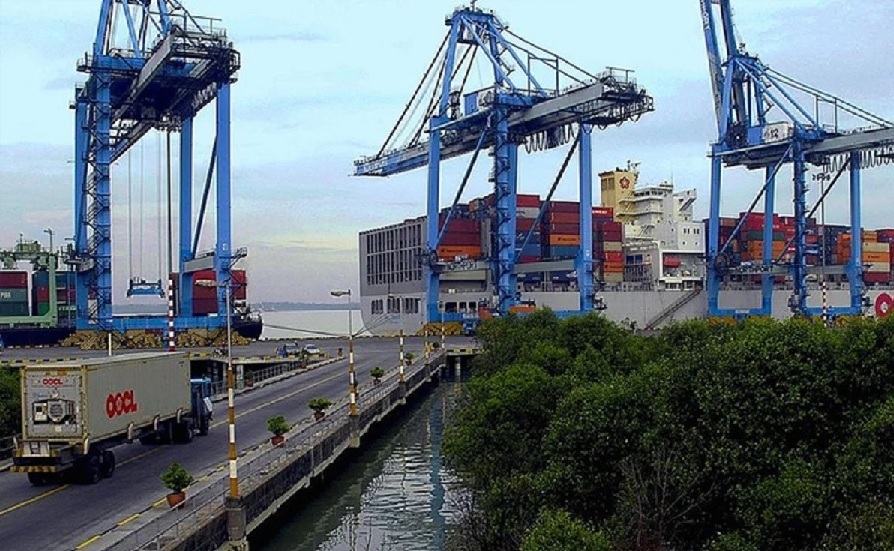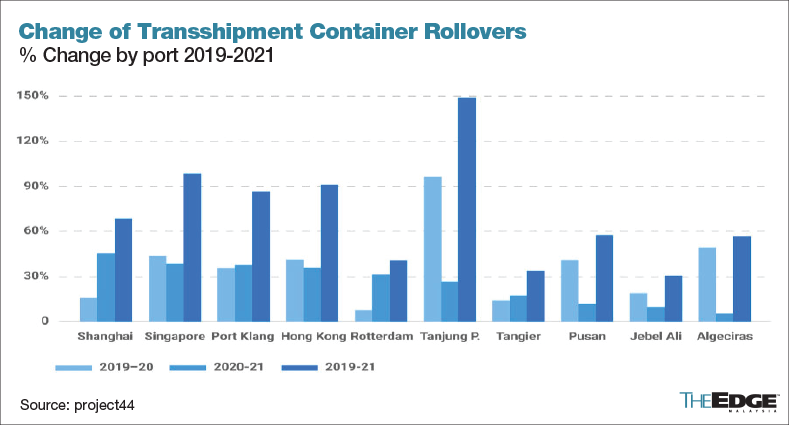
KUALA LUMPUR (Nov 11): Port Klang has the highest rollover percentage of 58.45% in 2021, an increase of 37.94% compared to 2020, according to transportation visibility platform project44.
In a statement on Thursday (Nov 11), the firm said global supply chains had been facing several major disruptions in 2021 and port congestion is only one of them.
It said vessel schedule disruptions with increases of up to 45% in the ratio of container rollovers, increased transit times and increases in blank sailings are among the underlying factors causing shipment delays and global supply chain disruptions.
project44 vice-president of data insights Josh Brazil said looking at future blank sailing schedules, there seems to be no immediate improvement on the horizon and "we don’t see the situation improving until after Lunar New Year in 2022 when China will shut down for about two weeks".
“Bear in mind that about 60,000-70,000 containers are expected to come into service around mid-2022 and many of the new vessel orders will be on the water by mid- to late 2023,” he said.
Brazil said global container movement had been affected significantly by an increasing number of containers rolled and delayed across major transhipment hubs around the world.
“Ports were never meant to be storage facilities and in most cases, the average dwell time for transhipment containers used to be five days maximum,” said Brazil.
A three-year data map analysed by project44 of transhipment containers only shows the ratio of container rollovers at major ports between 2019 and 2021.
project44 said Shanghai recorded 38.66% of rollovers in 2021, an increase of 45.22% compared to rollovers in 2020.
Algeciras, Jebel Ali, Pusan, Tanjung Pelepas, Hong Kong and Singapore all recorded a higher percentage of rollovers in 2021 compared to 2020 but the percentage of change was lower than 2019-2020.
On the European side, Rotterdam showed an increase with rollovers increasing from 38.95% in 2020 to 51% in 2021, an increase of 30.94% compared to the 7.42% change in 2019-2020.
Brazil said the increase in rollovers at key transhipment ports around the world is a worrying factor in terms of schedule reliability.
“This means continuing schedule uncertainty, consistent increases and delays in cargo lead times,” he said.
According to project44 data, transit time for containers also drastically increased between 2019 and 2021 for the main corridors of China to North America's West Coast and China to Europe.
Transit time in this analysis refers to the time it takes for a container loaded on a ship at a port of loading to reach the port of discharge.
When comparing the main ports in China to the West Coast of North America, Yantian had the highest percentage change in transit time, increasing by 42.11% in 2021 compared to its 2020 levels, while Ningbo had the lowest percentage increase of 27.78%.
project44 said that when compared to 2019 levels, the 2021 transit time increases were all above 40%, which were significant considering the already stressed supply chains.
On the service to Europe, Shanghai had the highest percentage increase in transit time, increasing by 30.56% in 2021 compared to its 2020 levels, while Qingdao had the lowest percentage increase of 25%.
Meanwhile, Brazil said blank sailing is another major factor that impacts container rollovers.
Blank sailing is when a ship scheduled to call a specified port skips that port.
“Blank sailings are a key factor of network disruption.
“The number of containers sitting in trans-ship ports on 'sweeper' vessels has distorted the equilibrium in the global network,” he said.
Get the latest news @ www.EdgeProp.my
Subscribe to our Telegram channel for the latest stories and updates






